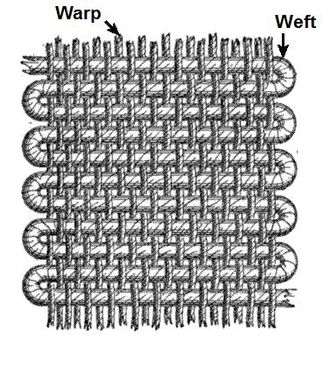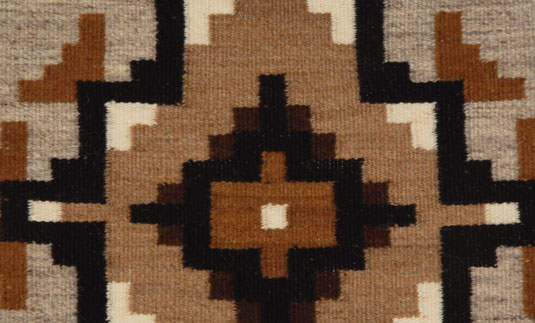Tapestry Weave Two Grey Hills Navajo Textile [SOLD]
+ Add to my watchlist Forward to Friend
- Category: Navajo Textiles
- Origin: Diné of the Navajo Nation
- Medium: wool
- Size: 41” x 26-1/2”
- Item # C3860E SOLD
Tapestries from Two Grey Hills on the Navajo Reservation are celebrated as the finest textiles woven on the reservation. Weavers at Two Grey Hills use wool from their own stock of sheep, they clean the wool, card it into yarn, and then card mixtures of brown, white and black wool together to achieve the colors and shades the weaver wishes to use. For instance, the grey seen in these tapestries is carded from white and black wool, and shades of brown are achieved by carding white and brown wool in various mixtures. Typically, there is no dye used in Two Grey Hills rugs. Only occasionally do weavers over-dye black wool to achieve a darker black.
Rachel Curley was a master weaver during her lifetime. She is famous for weaving one of the largest Two Grey Hills textiles—17’8” x 11’7”—on commission in 1957 from a man who passed away during the three years the rug was on the loom. Rachel was known for the fineness of her textiles and for her creative use of the Two Grey Hills design. *She is known for achieving 50 to 100 warp per inch and 15 to 20 weft per inch.
Condition: excellent condition
Provenance: from a gentleman in New Mexico
Recommended Reading: American Indian Textiles 2,000 Artist Biographies by Gregory Schaaf
 *In weaving, the weft (sometimes woof) is the term for the thread or yarn which is drawn through, inserted over-and-under, the lengthwise warp yarns that are held in tension on a frame or loom to create cloth. Warp is the lengthwise or longitudinal thread in a roll, while weft is the transverse thread. A single thread of the weft, crossing the warp, is called a pick. Terms do vary (for instance, in North America, the weft is sometimes referred to as the fill or the filling yarn). Each individual warp thread in a fabric is called a warp end or end. The weft is a thread or yarn usually made of spun fibre. The original fibres used were wool, flax or cotton. Today, man-made fibres are often used in weaving. Because the weft does not have to be stretched on a loom in the way that the warp is, it can generally be less strong. The weft is threaded through the warp using a "shuttle", air jets or "rapier grippers." Hand looms were the original weaver's tool, with the shuttle being threaded through alternately raised warps by hand. A useful way of remembering which is warp and which is weft is: 'one of them goes from weft to wight'. -Wikipedia
*In weaving, the weft (sometimes woof) is the term for the thread or yarn which is drawn through, inserted over-and-under, the lengthwise warp yarns that are held in tension on a frame or loom to create cloth. Warp is the lengthwise or longitudinal thread in a roll, while weft is the transverse thread. A single thread of the weft, crossing the warp, is called a pick. Terms do vary (for instance, in North America, the weft is sometimes referred to as the fill or the filling yarn). Each individual warp thread in a fabric is called a warp end or end. The weft is a thread or yarn usually made of spun fibre. The original fibres used were wool, flax or cotton. Today, man-made fibres are often used in weaving. Because the weft does not have to be stretched on a loom in the way that the warp is, it can generally be less strong. The weft is threaded through the warp using a "shuttle", air jets or "rapier grippers." Hand looms were the original weaver's tool, with the shuttle being threaded through alternately raised warps by hand. A useful way of remembering which is warp and which is weft is: 'one of them goes from weft to wight'. -Wikipedia

- Category: Navajo Textiles
- Origin: Diné of the Navajo Nation
- Medium: wool
- Size: 41” x 26-1/2”
- Item # C3860E SOLD



